A class schedule, otherwise known as a timetable, is a tool used to show a specific overview of events taking place in the future.
This framework indicates the activities planned for the organization and the time assigned to each activity or course. This schedule is necessary for organizations that want a smooth operation, especially when they have a lot of planned activities. Workers might also avoid missing obligations since they can keep track of them effortlessly.
A class timetable or schedule can be made for the entire institution, specific departments or year levels, and sometimes particular classes. The schedule shows the breakdown and time allotted to all the activities the school intends to carry out.
Why do Class Schedules Matter?
Class schedules are essential for allocating the school’s resources appropriately. But its usefulness does not end there; it also assists the students in determining which classes to attend and when to attend them. Teachers also benefit from using school schedules as they can avoid clashes over modern teaching resources that are limited.
In addition, without a properly drawn schedule, there is no order, and activities are done without structure. For example, an overlapping class might cause students to miss out on classes they would have liked to take. Other difficulties include lessons that are either too short or too long, causing learners to lose concentration. Finally, they might be unable to fulfill additional commitments outside of teaching and not have adequate resources to distribute among the organization’s members.
Free Templates
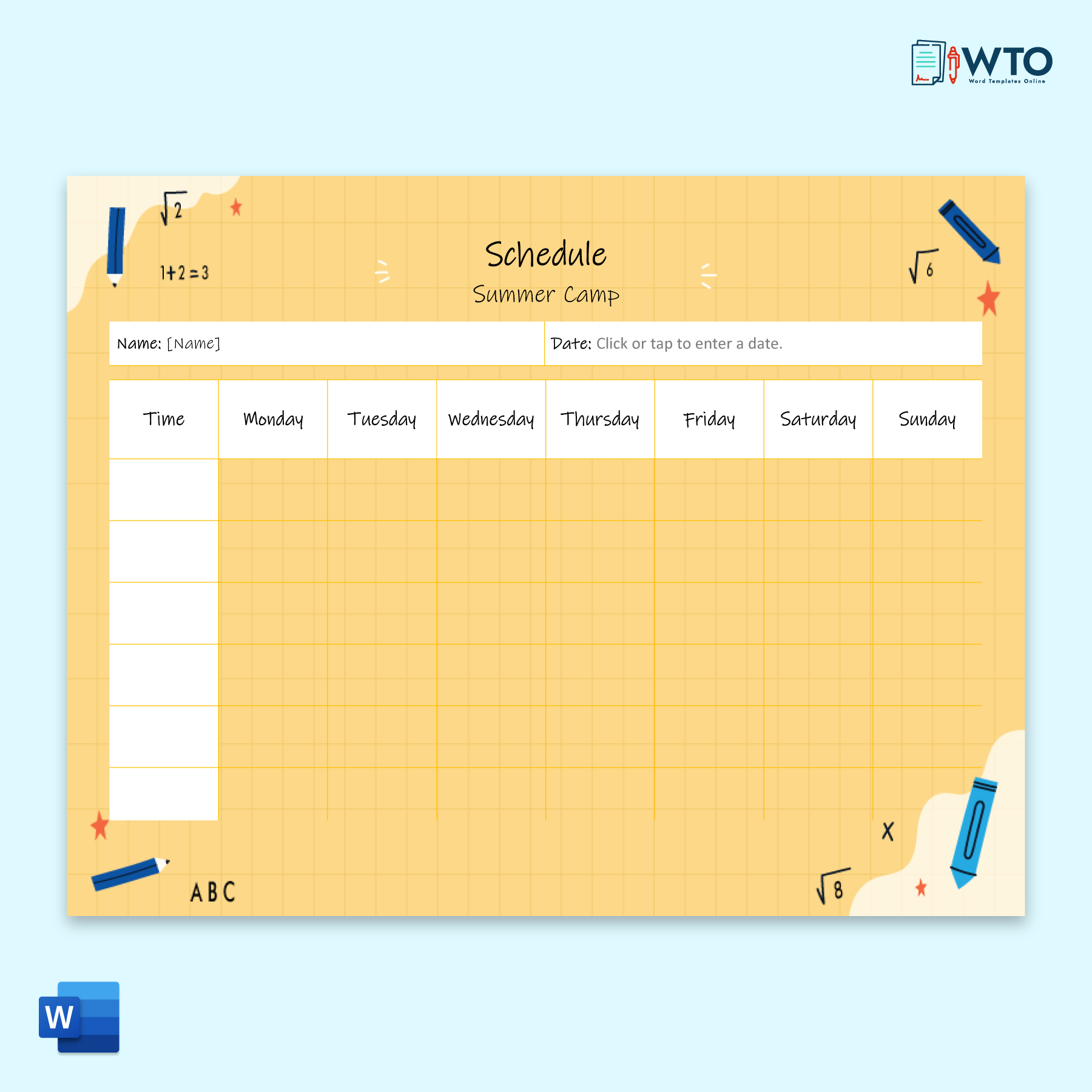
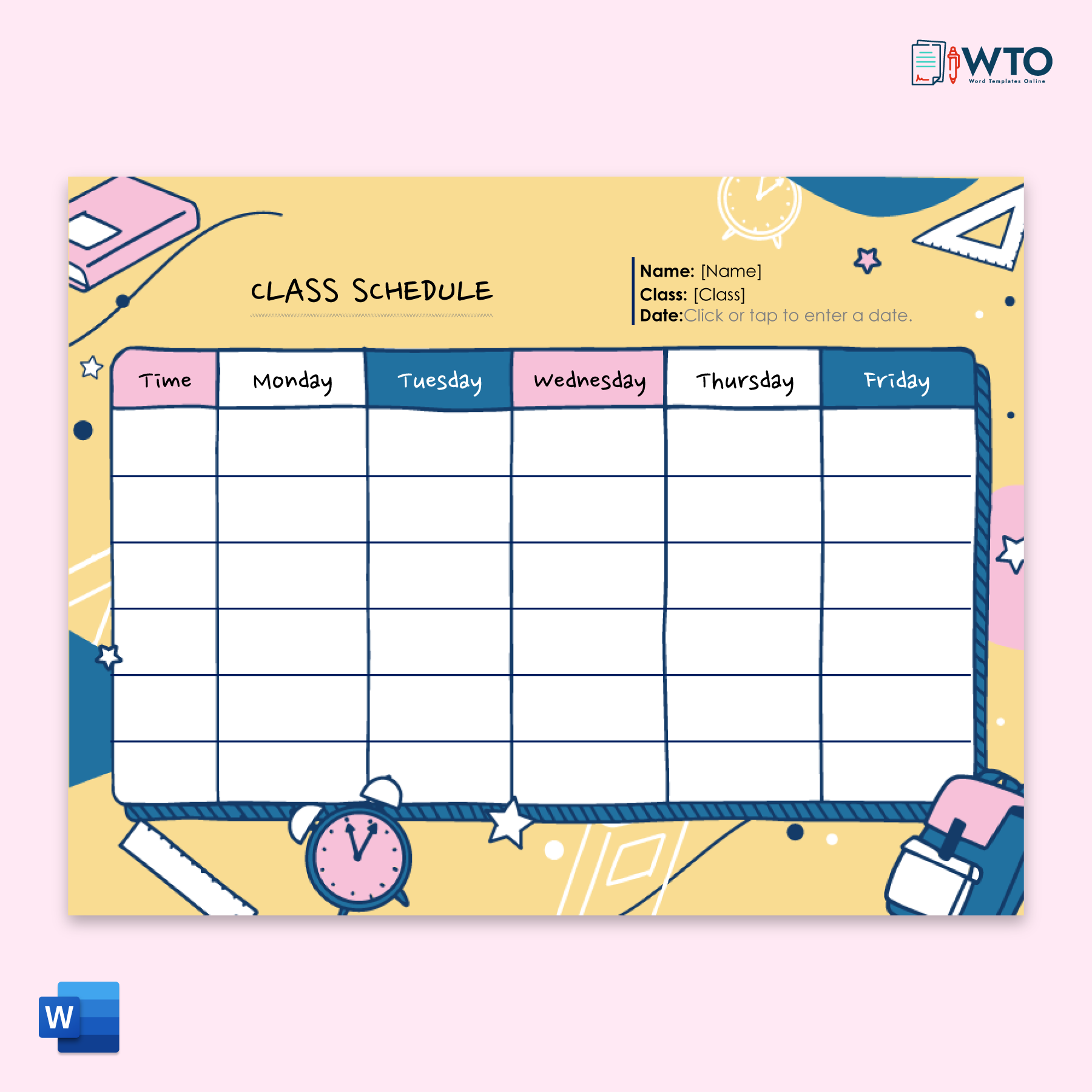
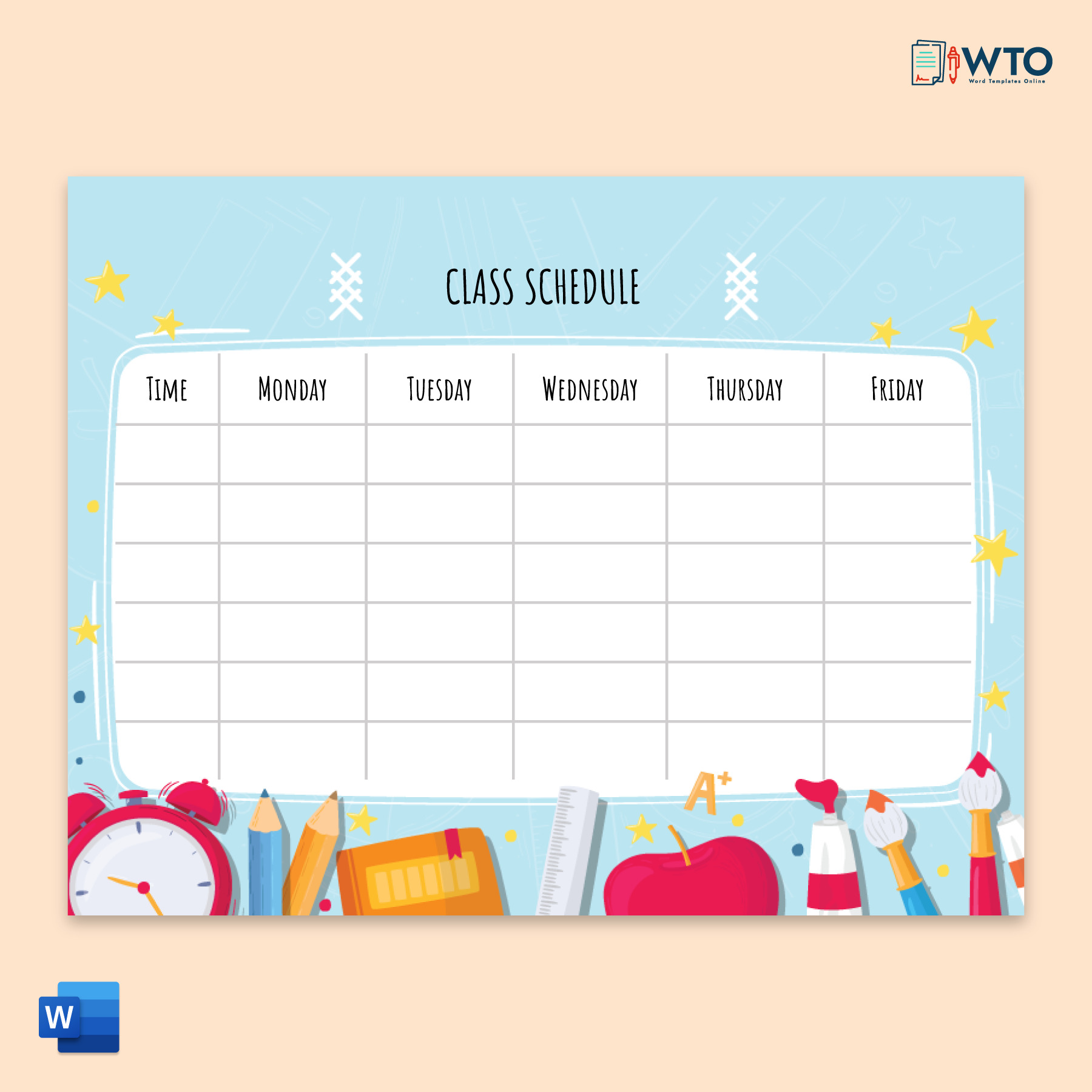
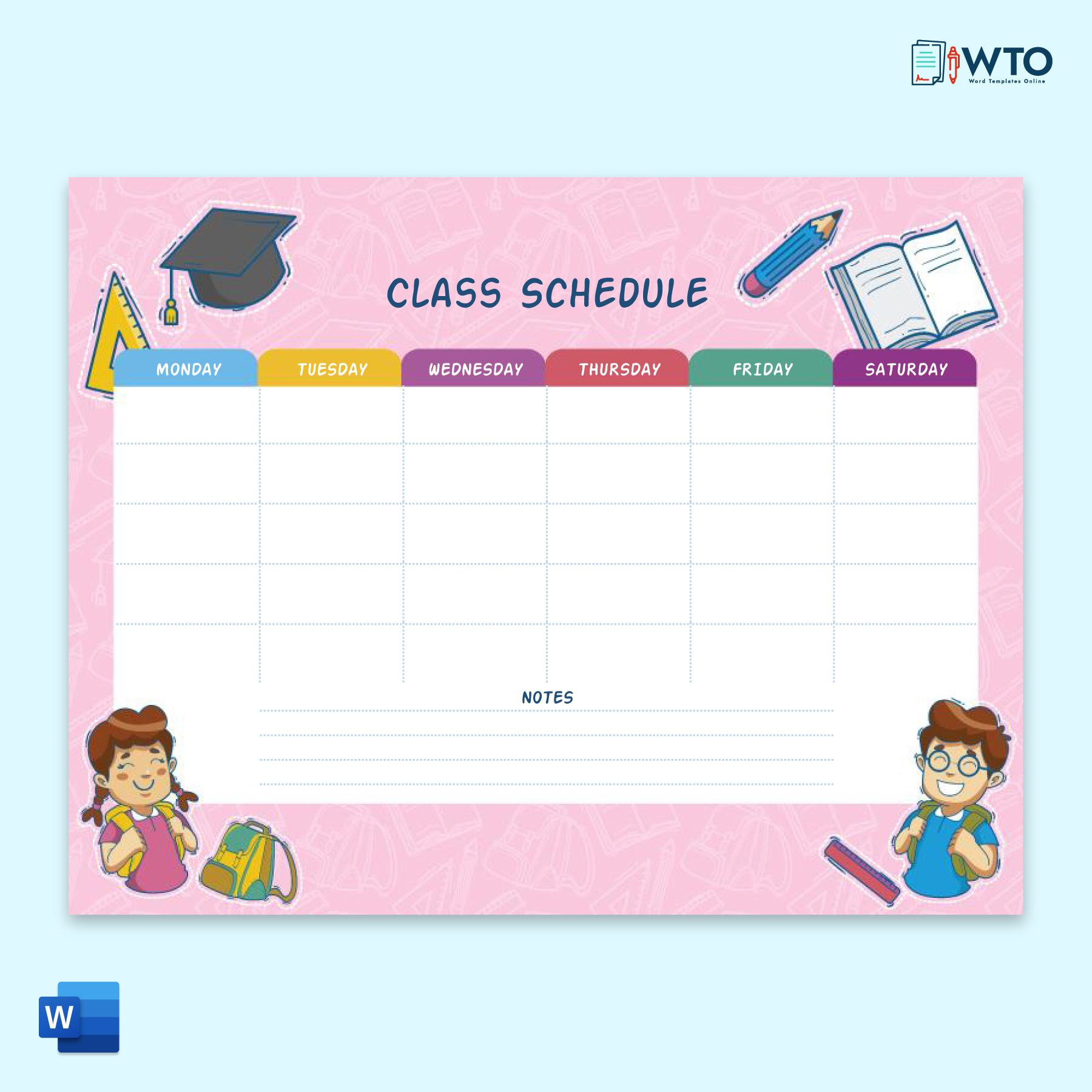
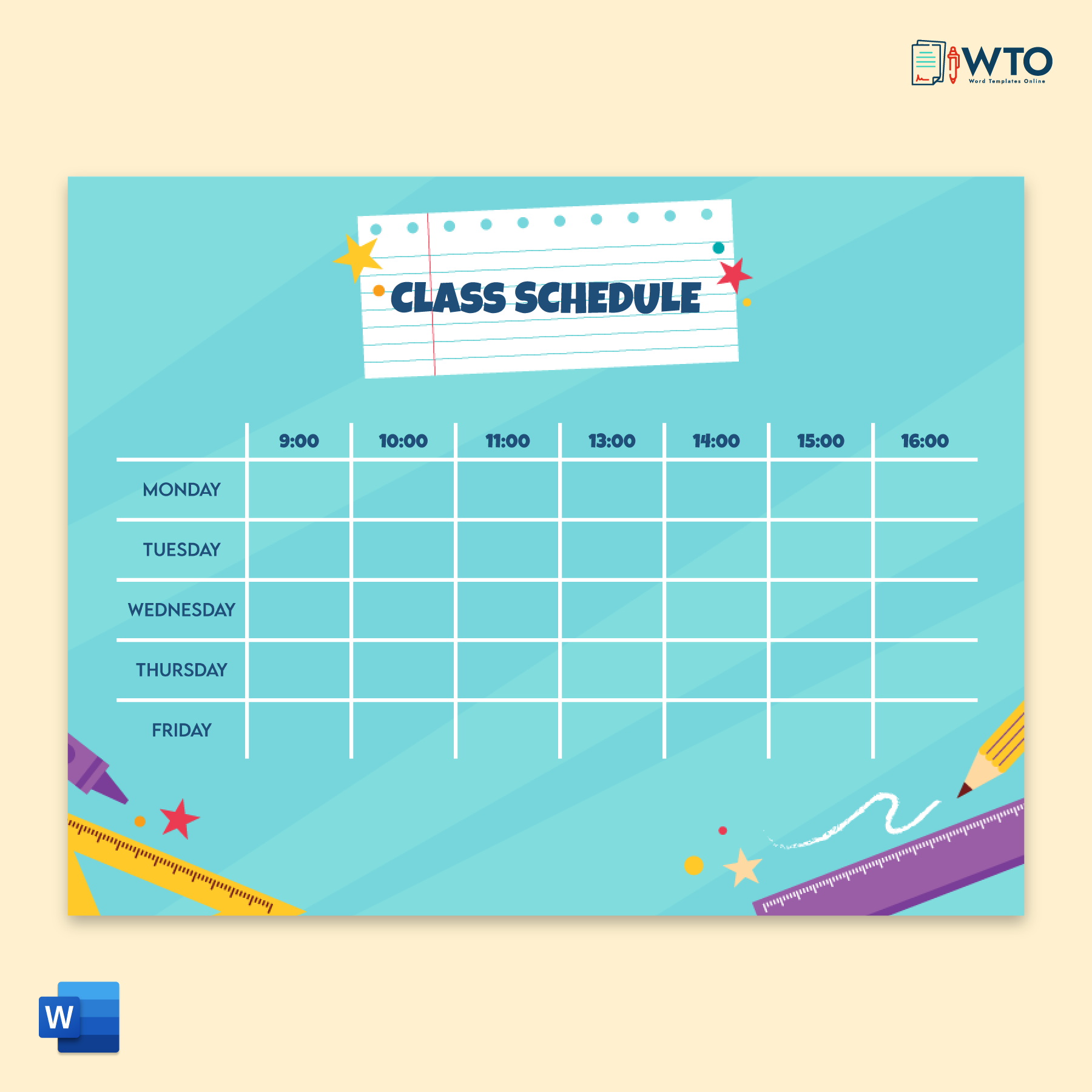
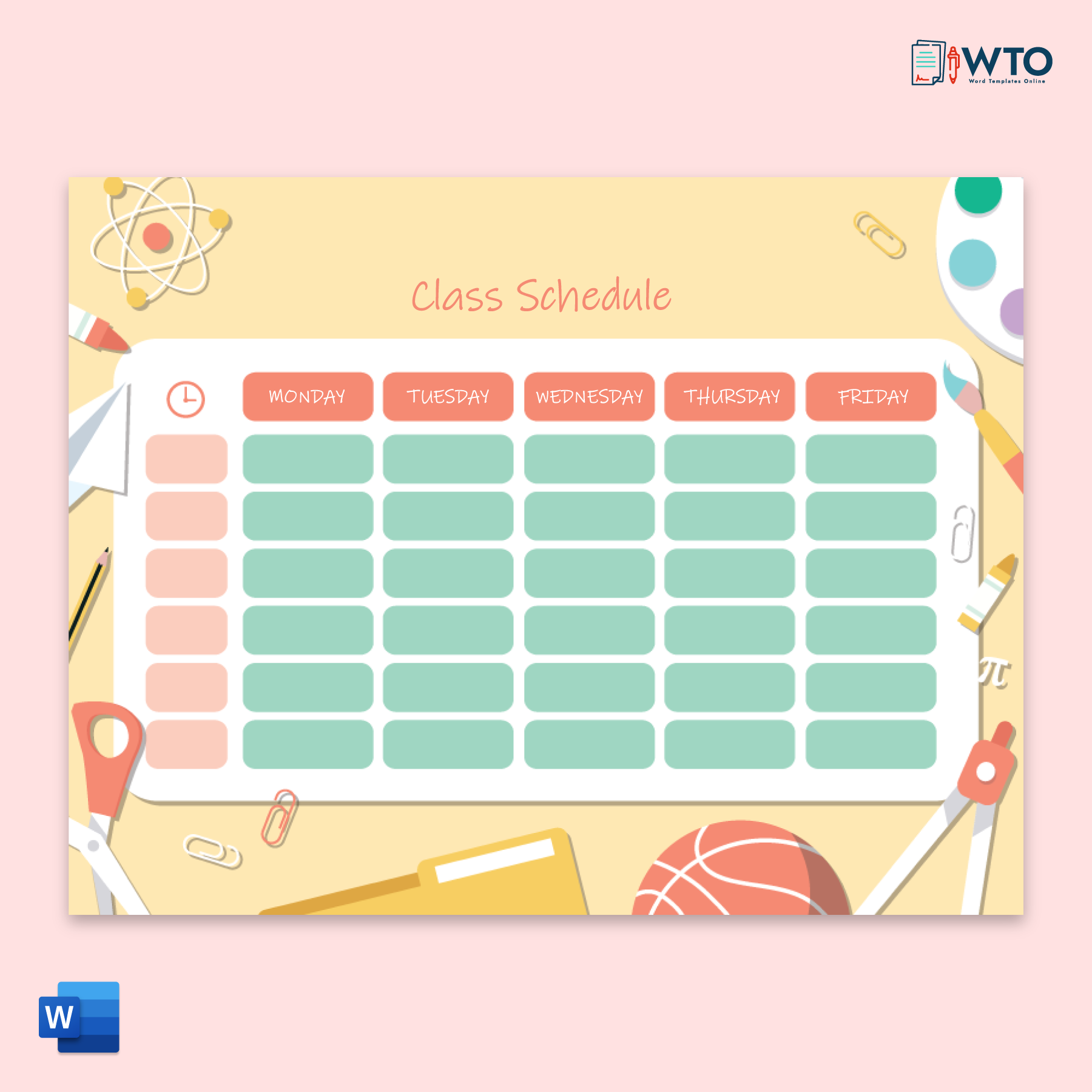
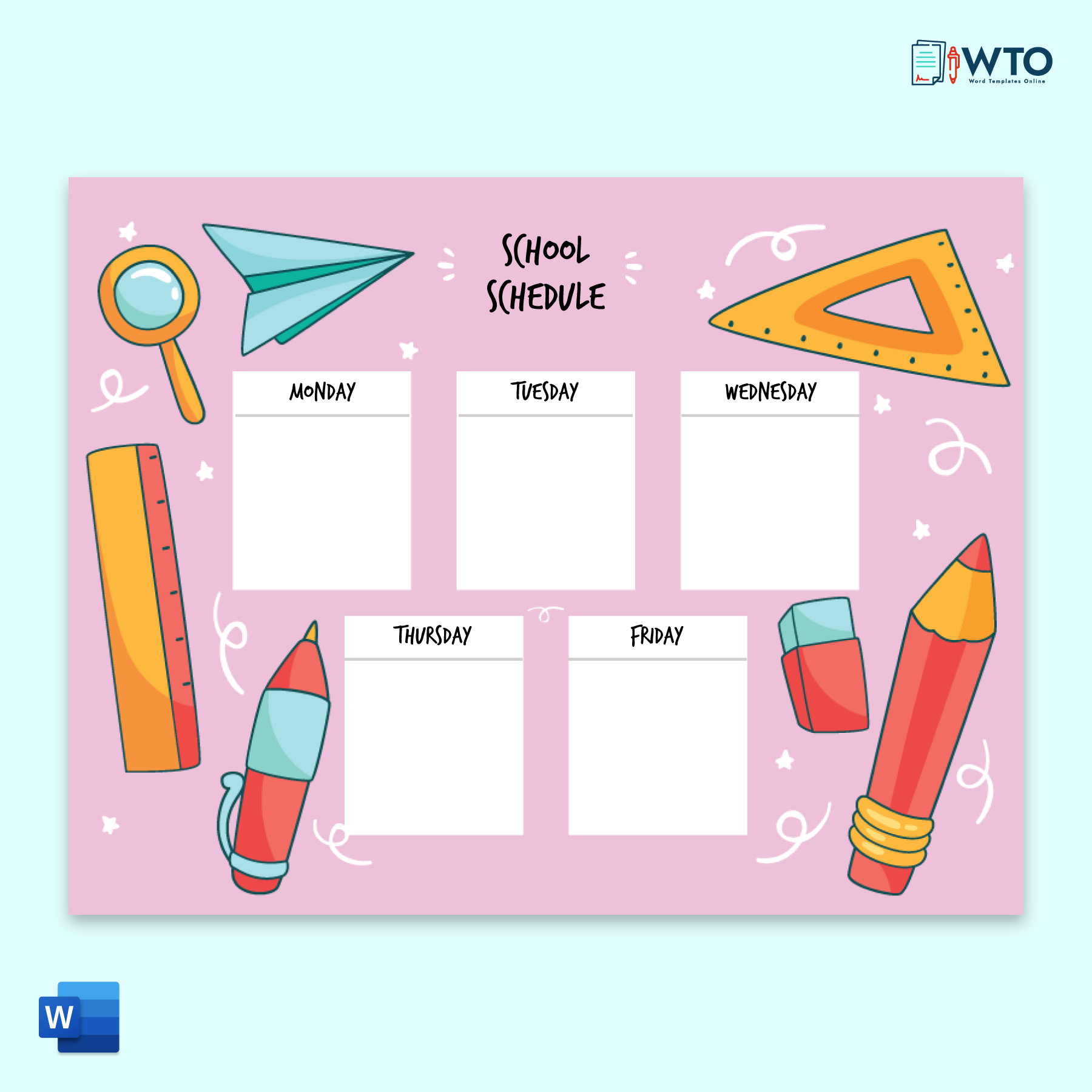
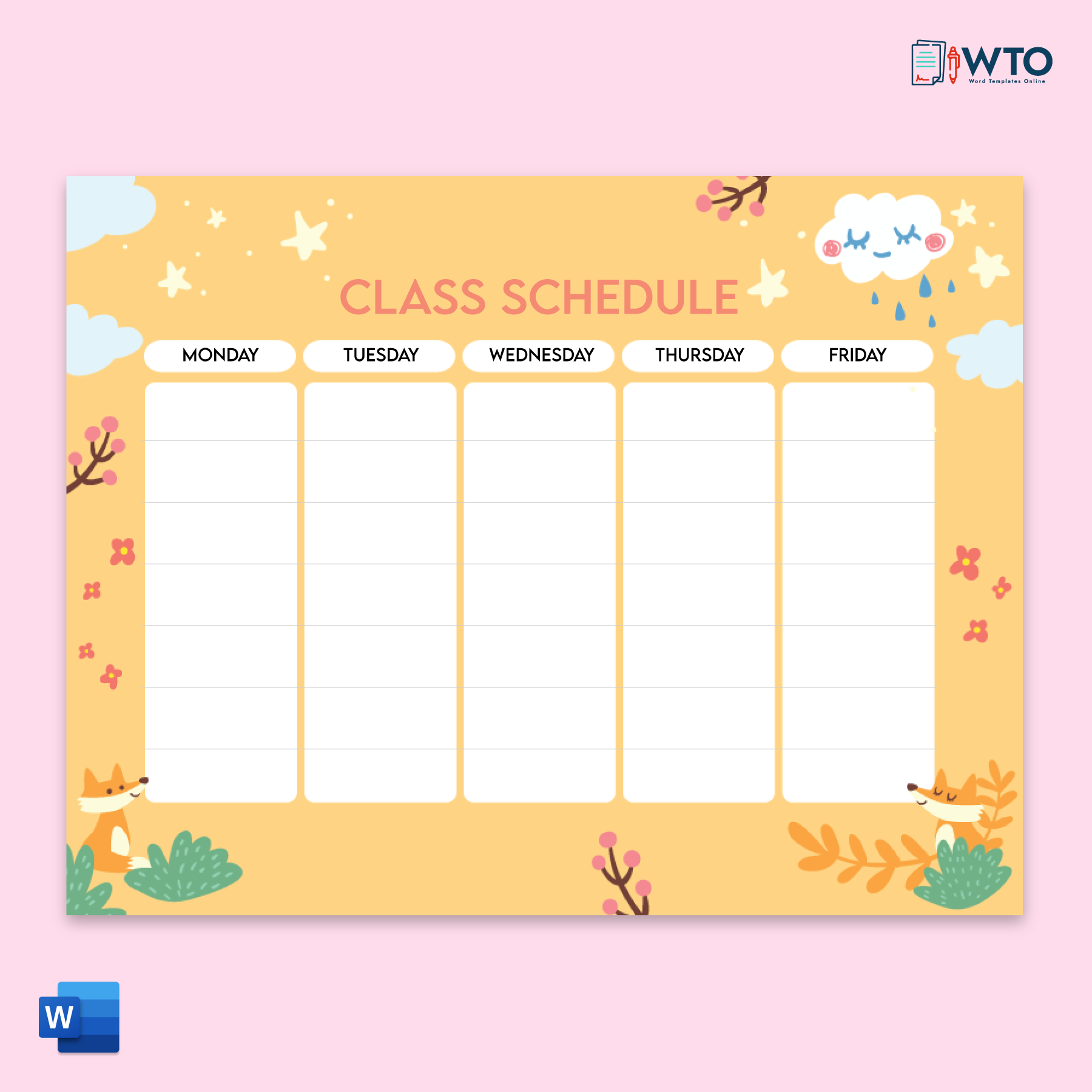
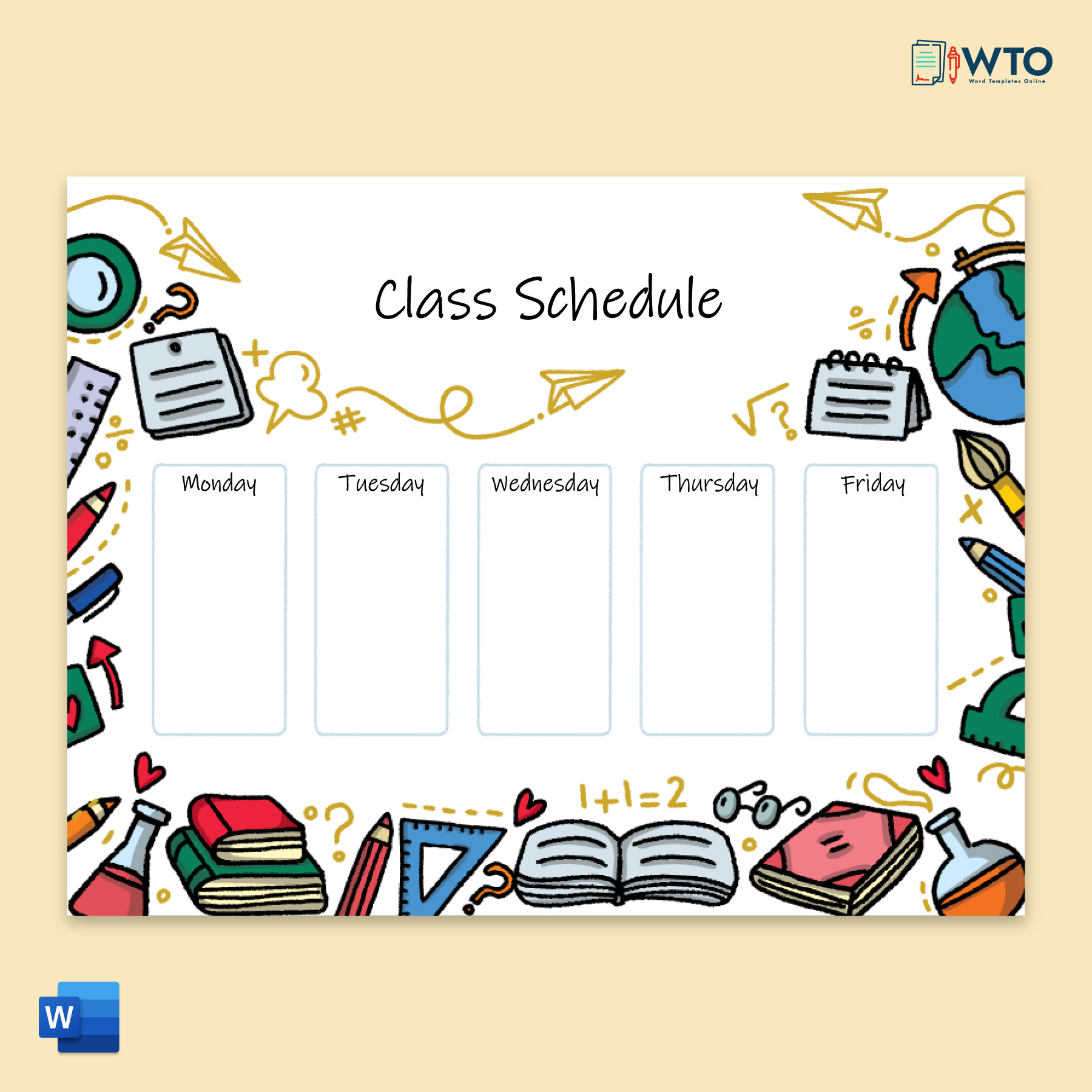
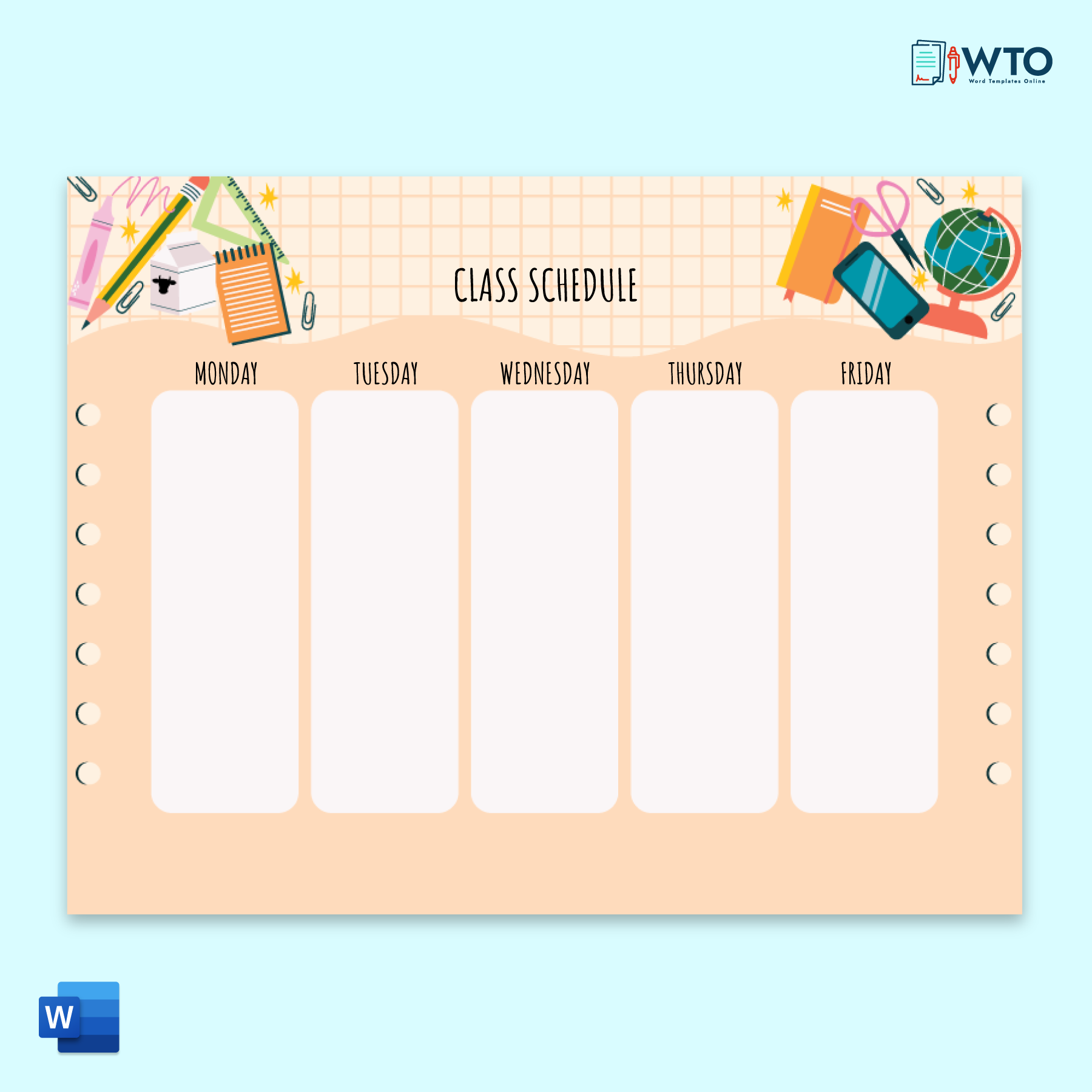
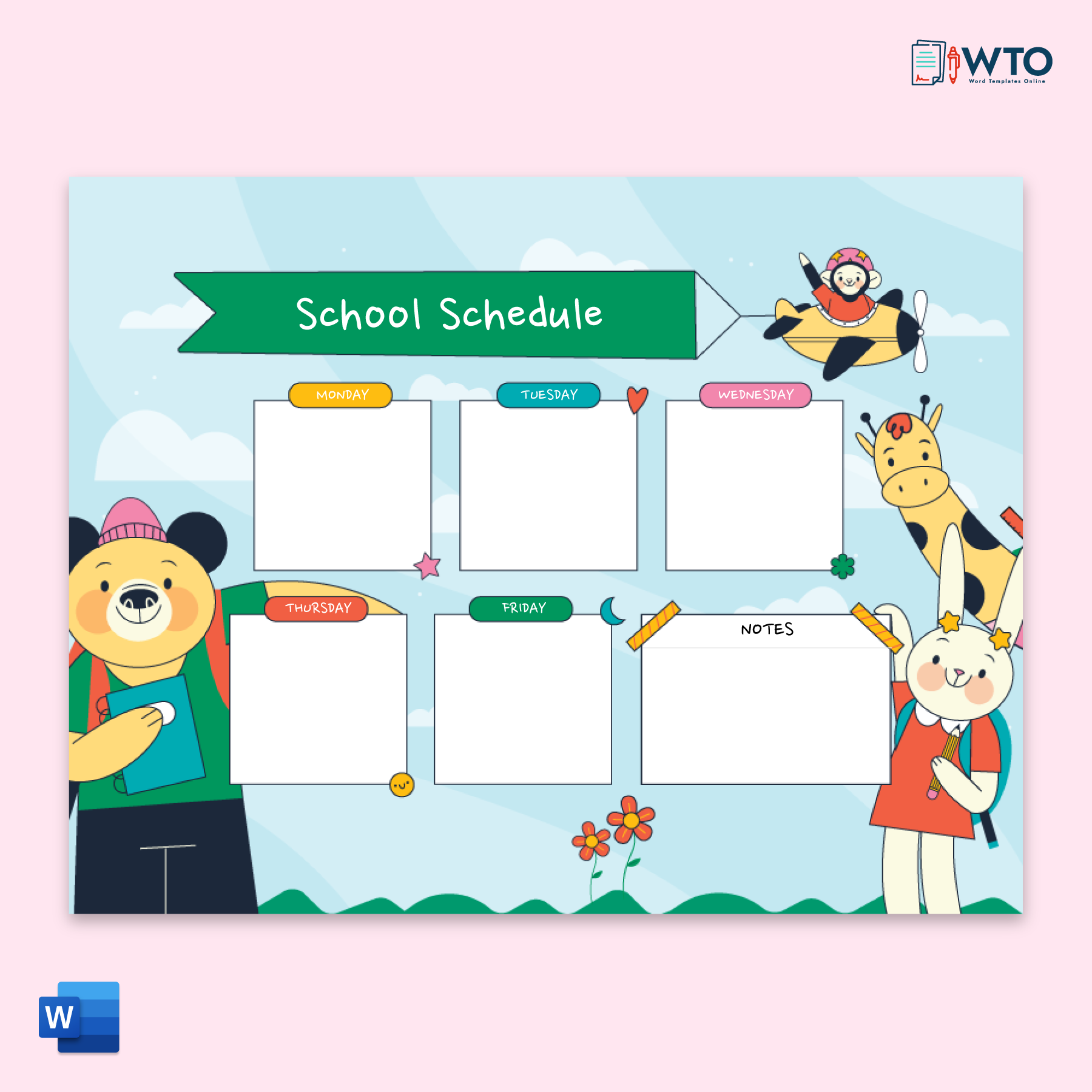
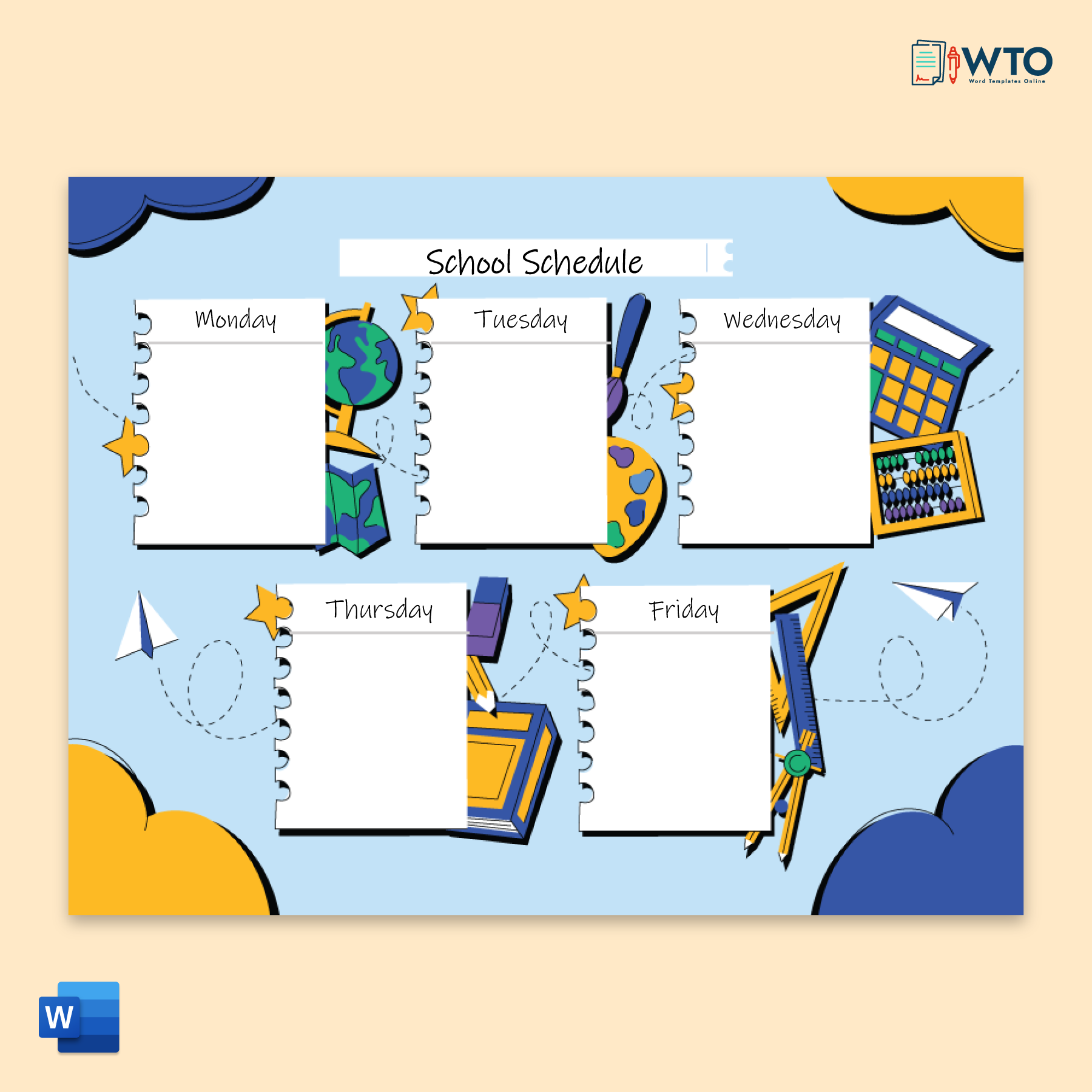
Benefits of Class Schedule
Class schedules are essential for several reasons. Primarily, an adequately constructed class schedule will help set the routine of all activities to be carried out in the class. Apart from easing the stress and headaches of the organization’s members, the benefits of a class schedule include the following:
Equally, distribute the time between learning and activities
Class schedules are created to enable proper time management, i.e., allocating time among all the necessary activities of the class. A schedule makes it easy to allocate specific time for all activities appropriately.
For example, if a class plans to grade its students four times a year by using a schedule, the periods for the grading can be highlighted so everyone is prepared. This gives the students ample time and opportunity to make the necessary preparations. The teachers would also be able to plan their lectures on that basis. Similarly, with a timetable prepared for each class, splitting daily study hours for subjects evenly becomes straightforward.
Ensures equal distribution of time among the staff
A schedule not only helps with time management but also helps to create a balanced workload for teachers and other staff members. Sometimes, a worker is assigned more workload than others. But with a schedule, the head of the organization can appropriately share the workload among all available staff members.
Creates a smooth workflow
Once a schedule has been created, negligence is eliminated as both students and teachers can quickly identify the activities that are supposed to be ongoing. The order, the person in charge, and the time slot are all clearly defined. The result is a seamless workflow process.
Helps to prevent wasting time and effort
A schedule ensures proper time management by showing everyone concerned about what to do and when to do it. This saves time and effort since the manner and timing of obligations are already set. In addition, resources required for specific tasks are solely utilized for their intended objectives.
Helpful in developing good habits
Also, since the activities in the schedule are fixed and meant to be followed by everyone in the class, the activities quickly become habits. For example, if a specific time is set aside for classroom cleaning, cleaning at that period becomes a habit over time. This makes it possible for everyone to know and understand what is expected of them at all times.
Types of a Class Schedule
There are different types of class schedules. The schedule a class uses would typically depend on its purpose and goals. In many cases, a class might use different schedules depending on what it is meant for.
The different types of class schedules are as follows:
The block schedule
This schedule relieves the stress of being forced to endure and cope with a time constraint. It was introduced in the 1970s and used by middle and high school institutions. The approach breaks the day up into sections or time blocks, and sessions run long—usually between 90 minutes and three hours. Each day is broken into four segments or blocks, with different subjects to be attended on alternate days. This usually means different subjects are done in the different semesters of the academic calendar.
A/B block schedule
This is a variant of the block schedule. The classes are divided into blocks labeled as A/B to be attended by students on alternate days. Each day has different subjects, split between “A” and “B” days. The classes allow variety and span from 60-90 minutes. However, since the classes are divided into sets, missing a day presents a challenge for the student to catch up on the missed work.
Multiple period flex block schedules
This schedule is prepared by dividing flex blocks into several recurring periods. In most cases, the periods are usually split between lunch breaks and other high-value activities like career planning or, in some cases, counseling.
Rotating block schedule
This type of schedule is challenging to create, but it gives workers and students a high degree of flexibility. It is mainly used to create space for particular activities or if there is a specific need for extra time allotment. Educational institutes with many students can take advantage of this schedule’s flexibility.
Rotating drop schedule
This schedule has a rotation schedule of about 7 or 8 classes. The scheduled classes are changed daily, but students are expected to attend around 5 or 6 of those classes each day. The free spaces in the schedule can be used for those activities that require additional time.
Traditional 6 or 7-period day schedule
This type of schedule is the most commonly used in American schools. Depending on the school’s goal, classes, or age, the students must take 6 or 7 classes daily throughout the school calendar year. The time allocation of this program is more suited for a younger age because lessons typically last 45 minutes. However, it is more disruptive for older students as they benefit more from longer-duration classes in the block schedule system.
Block Vs. Traditional Schedule
Block and traditional schedules are usually favored in educational institutions. While there is no wrong or right choice, we can compare the two by weighing their benefits and limitations against each other as follows:
Benefits
A considerable advantage of the innovative block schedule is that it gives students and teachers ample time to work with learning materials and connect with each other. This is made possible by the long duration of activities planned.
On the other hand, the traditional school schedule also offers a unique benefit by facilitating student learning and retention. This is due to the students’ continuous exposure to their teachers and learning materials.
Limitations
One of the block schedule’s most significant limitations is that the long learning duration might be overwhelming. Therefore, it requires the best and most professional approach to ensure the periods are practical and beneficial to the students.
One of the most pronounced limitations of the traditional school schedule is the number of daily classes and activities the students have to deal with. Students may find it challenging to attend six or seven classes daily, especially when studying for exams.
Considerations for Selecting a School Schedule
The decision of which school timetable to utilize is influenced by various elements, including the institute’s purpose and the size of the students. The following are the primary considerations when selecting a school schedule:
Familiarity with the offered courses
One of the first things to consider when selecting the type of schedule to adopt is familiarity with the courses offered. All courses have specific requirements and resources needed to complete them adequately. The company may then select the best option for the courses they deliver by weighing their necessity.
Fundamental assessment of teacher’s free time
Another thing to consider before selecting a school schedule is evaluating how much free time the teachers have and if the institution is getting the best out of them. This can also be evaluated by examining if there is an improvement in student performance. A timetable can be set to foster the best possible interaction between the instructor and pupils since the teacher’s spare time is considered.
Identification of student’s needs
Another essential factor to consider is the needs of students. Students of different ages and classes have peculiar needs, which should be evaluated so that an appropriate schedule can be designed. For example, children in elementary classes are restless and would have a lot of trouble coping with long periods of singular activities. On the other hand, a different schedule would be required for high school pupils with specific interests for obvious reasons.
Other considerations
Other things might affect the decision on the type of schedule to be used. Before any decision is made, the school institution must evaluate and pay attention to these factors, as they will impact whether or not the scheduling is efficient.
Some of these things include:
- The importance placed on student behavior
- The ability level of students
- Desired level of interaction between students
- Preference of teachers
- Parent’s attitudes and reactions towards courses
Taking these things into account allows you to get the maximum benefits of the schedule you have decided to use. On the other hand, omitting one or two essential factors might lead to adopting a schedule that causes more problems for everyone concerned.
Steps to Create a Class Schedule
A schedule should never be rushed into without careful and adequate planning. The following steps will explain the things to consider in creating a schedule. If these procedures are followed, you will have a seamless and more efficient system.
These steps include:
Set priorities before starting
Before you start creating anything, understanding and setting your priorities is essential. Your priorities should be set in order of preference, so the most important things can be attended to first. Then, the less important ones can always fit in when there is extra space. This ensures your schedule is in line with your priorities and goals.
Focus on the content of the schedule
According to scheduling research, there is no magical structure for a schedule; thus, no schedule is the same. What is essential is the actual content and intended goal. This means that you should not just prepare a schedule because of its appeal or because it is what others use. If you are going with a schedule that offers more time for activities, then the teachers need to be effective with the allocated time.
Similarly, you will have to be the judge of the number of courses to be taken by students. The stronger the synergy between learning and students’ readiness, the better their performance. Any schedule can help you achieve your goal, and you do not have to build a new one if you already have one suited to your unique conditions.
Provide extra time for educational intervention.
Many schools provide extra help for struggling students outside the regular classes. Help can come in many forms, like co-teaching or making a different curriculum available to aid their learning. But extra help does not provide more learning time; it only gives more assistance.
However, if you try to follow best practices, you must use a double-time strategy. In this model, the struggling students first get the opportunity of a presentation of the entire year’s work. An extra period is then set to give them the necessary support and guidance in understanding the school work. In addition to giving essential instructions to the syllabus, there is more time to study for students who are having trouble keeping up with the content.
Maximize access to the rigorous courses
Another thing to be conscious of when creating an excellent school schedule is giving and examining access to rigorous and honors courses. Understanding and analyzing the data will help determine the basis for distributing students into these classes in various school departments. A better schedule that gives more access to these courses means the students can raise their achievements.
Set class size targets
The class size goal refers to the average number of students a teacher is responsible for in the institution. In most cases, using a school-wide average can be misleading regarding resource or time allocation. For example, high-level or challenging classes have fewer students but often require significant effort and commitment. As a result, if a general average is taken, less time will be spent on more time-consuming activities in relation to the easier ones.
Match staffing to the enrollment of the students.
You should always know the number and category of teachers needed for every school calendar year. This awareness will make it possible to share the workload appropriately among the teachers you have in the school institution. First, determine the total number of enrolled students and the number of students to put into individual classes. Then, your staffing requirements for the school timetable will be revealed by the number of classes you have.
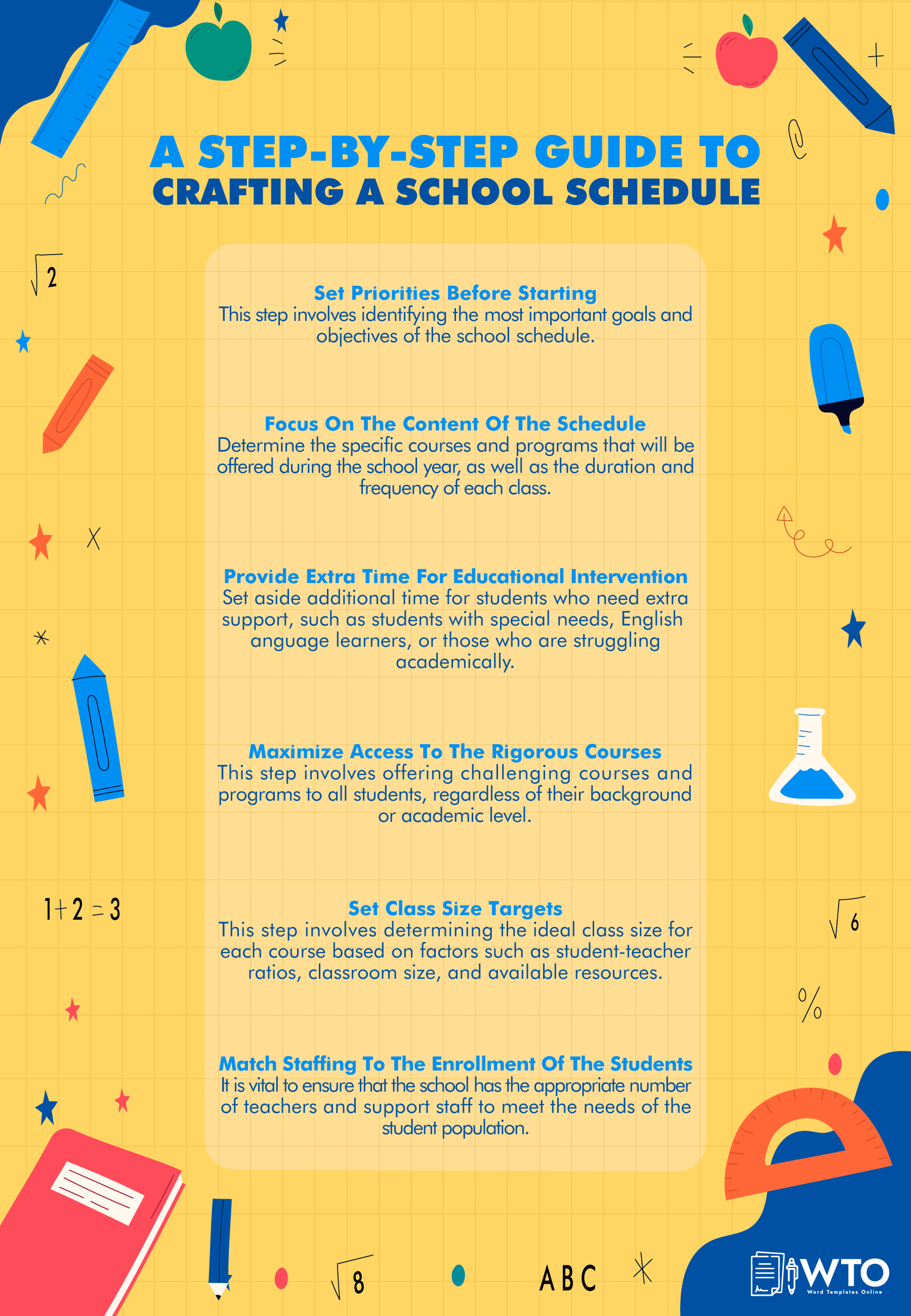
How to Create a School Schedule Using a Template?
No doubt creating a school schedule comes with its difficulties and technicalities. It can quickly get overwhelming if it is not something you have done before. However, we have made various school schedule templates available to save you from most of the stress associated with this.
Here are the steps in choosing a suitable schedule template.:
Select a template from the collection
This website is loaded with free and downloadable school schedule templates you can choose from. But first, you must understand your priorities and select and download the most appropriate for your goals.
Make adjustments
After selecting the template, you must start making adjustments and filling the template with your unique resources, activities, or courses. But, again, this would only take a little time.
Proofread
Once you fill out the template, examine everything you have entered again to ensure you have not left anything or made any mistakes. Of course, any mistake or omission should be corrected immediately.
Tips to Improve the Class Schedule
The journey does not end with adopting a class timetable. While you begin to enjoy the benefits attached, there are steps to take your class schedule to the next level.
Some tips to improve your class schedule are discussed below:
Leave room for collaboration
You must understand that teachers are humans, not robots. This is why you should slip time for their collaboration into your schedule. Set a time every week for activities like peer review, brainstorming of ideas, and feedback. This would dramatically increase the quality and efficiency of work.
Provide enough time for lesson preparation for the teachers
The instructors are human, so make sure that they are not working all day long due to poor schedule planning. You must remember that planning lessons and grading student works are part of the job; teachers should not sacrifice their leisure time to complete these activities. It is, therefore, essential to schedule in such a way that these activities are reflected.
Make it flexible
Some courses need more time investment than others; thus, this requirement difference should be accounted for. Although, for example, a history class can be completed in 60 minutes, this same time would be inadequate for a course that includes practicals and theory. An adequately designed schedule should be flexible enough to permit these differences.
Ensure versatility in the class schedule
Introducing a fresh activity into a student’s schedule helps them learn more since it breaks up the monotony of attending the same classes every day. To boost students’ productivity, occasionally split them to work in groups.
Allow for workload management
We have spoken about how a well-planned schedule may help with time management. However, it would be best to re-evaluate teachers’ workloads tod ensure enrollment changes do not disturb the balance.
Wrapping Up
Scheduling may require certain sacrifices. While you can put anything on your schedule, you will never be able to include everything. As a result, it is critical to establish a well-defined list of priorities. A well-planned class schedule is an excellent time management tool and enhances the accomplishment and performance of those concerned. If you want to simplify your life, use one of the numerous schedule templates provided on this website. By using them, you will be able to create simple systems. As a result, you can stress less and focus on fulfilling the important goals your class aims to achieve.








